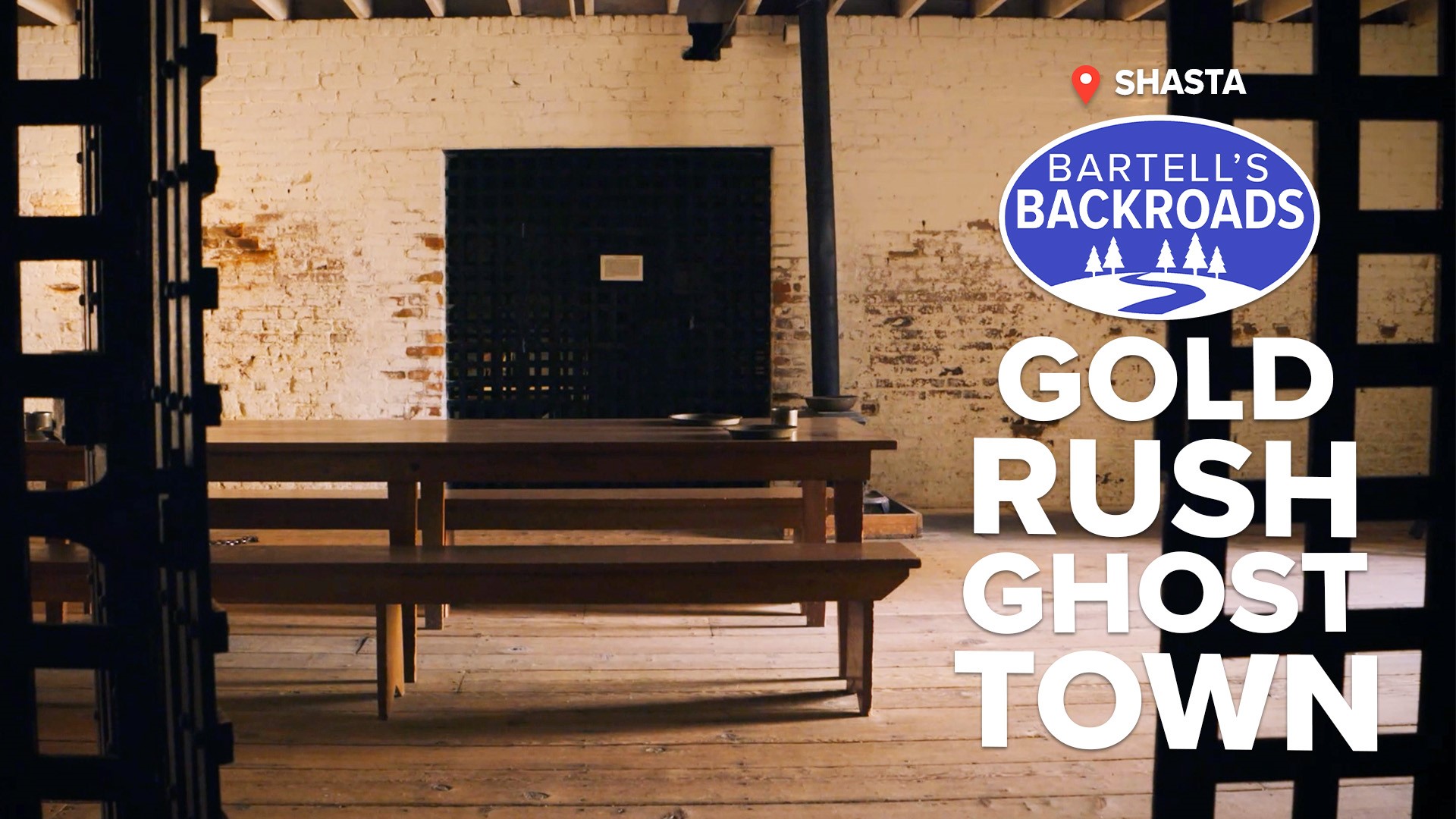SHASTA, Calif. — Just west of Redding on Highway 299 in Shasta County is a line of dilapidated brick buildings. You might have passed them without a thought on your way to Whiskeytown Lake or Humboldt County’s Redwood Forest but these brick structures are more than ruins, they are what’s left of the bustling gold rush town of Shasta.
Outlet malls weren’t invented during the gold rush but, if they were, Main Street in Shasta would be the first.
“This is where all the wagon roads ended, so if you wanted your supplies, this is where you came,” said Jonathan Sutliff with California State Parks.
A furniture store, a hardware store, a market, a bakery, a bookstore... you name it and the town Shasta had it all. In its heyday, more than 20,000 people lived there and the city planners built it to last with brick walls and fireproof iron doors.
“The buildings aren’t in ruins because of fire. They are in ruins because the business owners tore them down to rebuild in Redding,” said Sutliff.
In the late 1800s, the railroad chose to come through the town of Redding instead of Shasta, which was higher up the hill. Wanting to be closer to the railroad, all the businesses in Shasta closed shop and relocated.
“What you are seeing here is exactly what it looked like,” said Sutliff.
Today, State Parks manages the town of Shasta so travelers can see what it was like before the town went bust. Unlike the rest of the town, the courthouse and jail weren’t torn down and much of the prisoner restraints were left behind.
TAKE A TRIP ON BARTELL'S BACKROADS:
► See an interactive map of everywhere John has visited on the backroads
► Watch all of the Backroads videos
► Follow John on Facebook
When fugitives were captured, they were tried and often hanged in the same week on the gallows standing right outside the courtroom.
"The gallows were built for each hanging and torn down after because it was too gruesome,” said Sutliff.
Across the street, you can walk the boardwalk and peer inside the empty shops. Down the hill you will find the old stagecoach, which was the main mode of transportation before Highway 299 was put in.
“Because it was such a difficult journey, this stage coach was in use up until the early 1900s,” said Sutliff.
The stores and restaurants in Shasta may not be open anymore, but it's still worth a stop to see what used to be there. It’s also a great place to stretch your legs before heading up Highway 299.
MORE PARKS TO SEE ON THE BACKROADS: California state parks you need to visit.



















